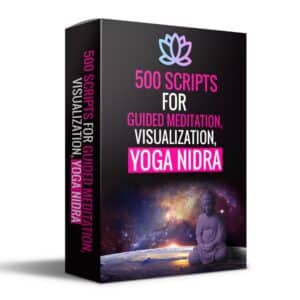Introduction to Mindfulness
Mindfulness is a way of paying attention to the present moment, using techniques like meditation, breathing, and yoga. It helps you become more aware of your thoughts and feelings so that instead of being overwhelmed by them, you can manage them better.
Benefits of Mindfulness in the Classroom
- Improves Focus and Concentration: Mindfulness can help you concentrate better on your studies and stay focused in class.
- Reduces Stress and Anxiety: Practicing mindfulness can help you feel calmer and reduce feelings of stress and anxiety.
- Enhances Emotional Regulation: It helps you understand and control your emotions, which can improve your interactions with others and your overall well-being.
Mindfulness Exercises You Can Try
1. Mindful Breathing
- How to Do It: Sit comfortably with your back straight. Close your eyes and focus on your breathing. Notice the air entering and leaving your nostrils. If your mind wanders, gently bring your focus back to your breath.
- When to Do It: Try this for a few minutes at the start of your day or during any transition between classes.
2. Body Scan Meditation
- How to Do It: Lie down or sit comfortably. Close your eyes and focus on your body, starting from your toes and moving up to your head. Notice any areas of tension or relaxation without trying to change anything.
- When to Do It: This can be a good way to relax after school or before starting homework.
3. Mindful Listening
- How to Do It: When someone is speaking, listen with full attention. Notice the sounds of their words, their tone, and your own reactions, but try not to judge or interrupt. Just listen.
- When to Do It: Practice this during class discussions or when talking with friends or family.
4. Mindful Eating
- How to Do It: Pay attention to the experience of eating. Notice the colors, smells, textures, and tastes of your food. Eat slowly and savor each bite.
- When to Do It: Try this during your lunch break or when having a snack.
Incorporating Mindfulness into Your Daily Routine
- Start Small: Begin with just a few minutes of mindfulness practice each day and gradually increase the time as you become more comfortable with the exercises.
- Create a Routine: Set aside a specific time each day for mindfulness to help make it a habit.
- Be Patient: Mindfulness takes practice, so don’t get discouraged if it feels difficult at first. It will become easier over time.
Conclusion
Mindfulness is a powerful tool that can enhance your learning, improve your emotional well-being, and help you enjoy your time in school more. By incorporating these simple exercises into your daily routine, you can start experiencing the benefits of mindfulness in your academic and personal life. Remember, the key is consistency and patience. Practice mindfulness regularly, and you’ll likely notice positive changes in how you feel and how you interact with the world around you.
Discover the transformative power of mindfulness with our carefully curated collection of printable mindfulness worksheets and exercises. Each worksheet is designed to guide you through exercises that cultivate awareness, reduce stress, and promote emotional well-being. From grounding techniques to breathing exercises, these tools are your allies in navigating the complexities of daily life with a sense of calm and presence. Whether you’re a beginner or looking to deepen your practice, these printable resources are tailored to meet your needs.
Save up to 88% with our Bundles
Instant Download
- Digital Download
- Digital file type(s): 1x PDF
- Your files will be available to download once payment is confirmed

![Printable Mindfulness Worksheet & Exercises for the Classroom [PDF]](https://guidedmeditationscript.com/wp-content/uploads/2024/03/Printable-Mindfulness-Worksheet-Exercises-for-the-Classroom-PDF.jpg)
![Printable Mindfulness Worksheet & Exercises for Middle Schoolers [PDF]](https://guidedmeditationscript.com/wp-content/uploads/2024/03/Printable-Mindfulness-Worksheet-Exercises-for-Middle-Schoolers-PDF-300x150.jpg)
![Printable Mindfulness Worksheet & Exercises for Teens [PDF]](https://guidedmeditationscript.com/wp-content/uploads/2024/03/Printable-Mindfulness-Worksheet-Exercises-for-Teens-PDF-300x150.jpg)
![15,000 Positive Affirmations Bundle [PDF]](https://guidedmeditationscript.com/wp-content/uploads/2024/01/15000-Positive-Affirmations-Bundle-PDF-1-300x300.webp)

![150 Best Hypnosis Scripts [PDF] Bundle](https://guidedmeditationscript.com/wp-content/uploads/2023/11/150-Best-Hypnosis-Scripts-PDF-Bundle-300x300.jpg)

![200 Printable Mindfulness Exercises Worksheets Bundle [PDF]](https://guidedmeditationscript.com/wp-content/uploads/2024/02/200-Printable-Mindfulness-Exercises-Worksheets-Bundle-PDF-300x300.jpg)


![Printable Trauma-Sensitive Mindfulness Exercises & Worksheet [PDF]](https://guidedmeditationscript.com/wp-content/uploads/2024/02/Printable-Trauma-Sensitive-Mindfulness-Exercises-Worksheet-PDF-300x150.jpg)
![Printable Mindfulness Exercises & Worksheet for Managing Psychosis [PDF]](https://guidedmeditationscript.com/wp-content/uploads/2024/02/Printable-Mindfulness-Exercises-Worksheet-for-Managing-Psychosis-PDF-300x150.jpg)
![Printable Mindfulness Exercises & Worksheet for Anxiety Relief [PDF]](https://guidedmeditationscript.com/wp-content/uploads/2024/02/Printable-Mindfulness-Exercises-Worksheet-for-Anxiety-Relief-PDF-300x150.jpg)